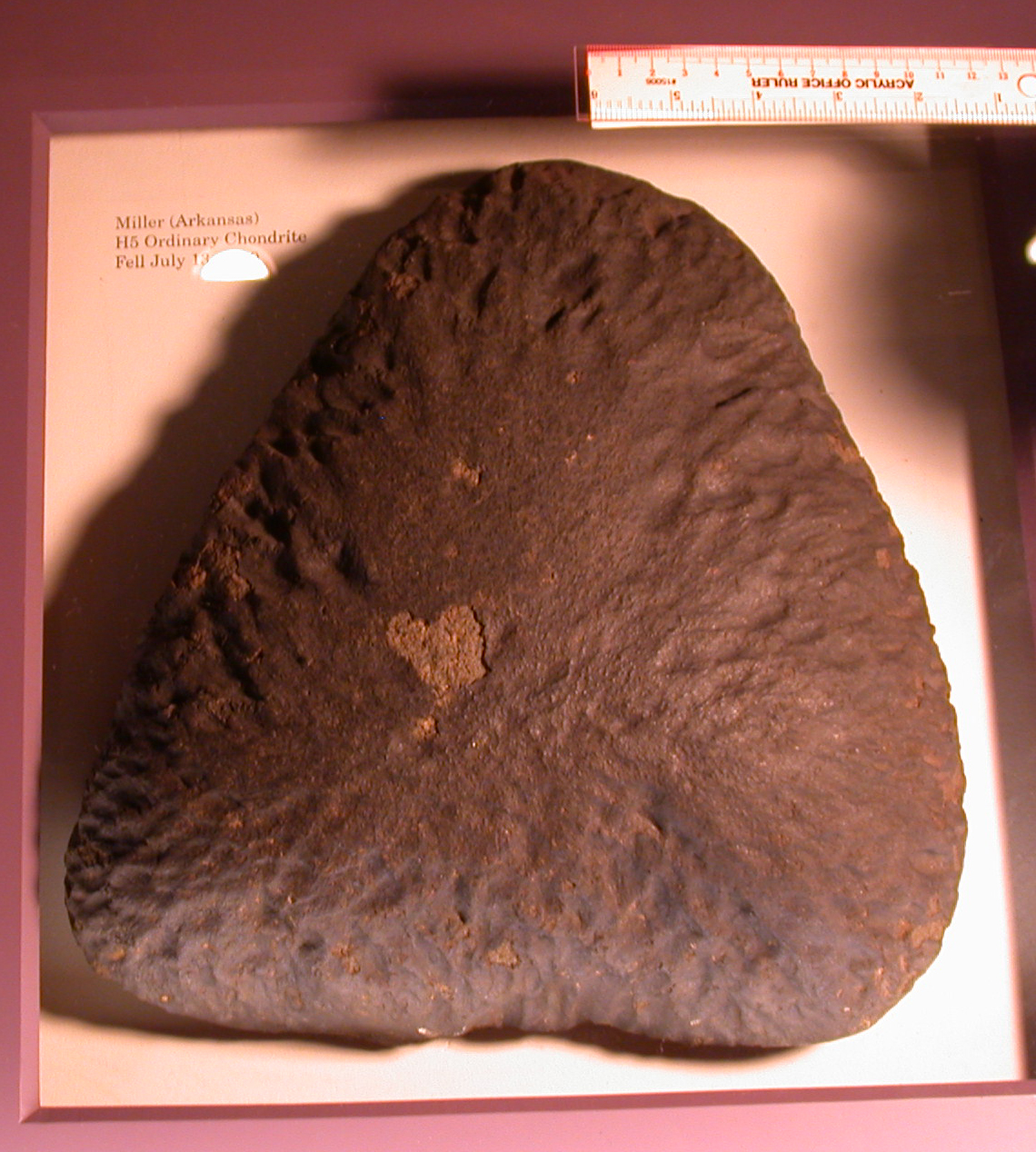
Miller Ordinary Chondrite
Fell on July 13, 1930
Cleburne County, Arkansas
This sample illustrates fusion crust,
and flow lines where glass (fused, or melted rock), flowed from the front of
the meteorite toward the back of the meteorite, while it was in flight.
The front is toward the viewer (you) in this photograph, while the back part
is concealed. The fusion crust has chipped off in a few places toward the
center of the specimen.
This is a classic example of the "nose cone" structure developed by
some meteorites in their passage through the atmosphere.
The 14 ton Willamette iron meteorite, on display in the Rose Center,
has a near-perfect cone-shaped form. In these cases, part of
the meteorite is in front for most of the time, so it melts the most, because it
is smashing into air molecules at high speed. The melting meteorite adopts the
most aerodynamic shape, because the parts that stick out resist the air the most,
so they melt and are ablated away most rapidly.
This is the same thing that happens
to the Space Shuttles when they re-enter the atmosphere from space. However, the
shuttles have high-tech ceramic tiles on their undersides, to absorb the heat
of re-entry. The Space Shuttle tiles are made of refractory ceramics,
mostly oxides calcium and aluminum, which melt at very high temperatures. They
are somewhat similar in overall composition to the refractory, Ca-, Al-rich
inclusions, or CAIs, found in some carbonaceous chondrite meteorites.
(hot link above to CAI page).
links here...

